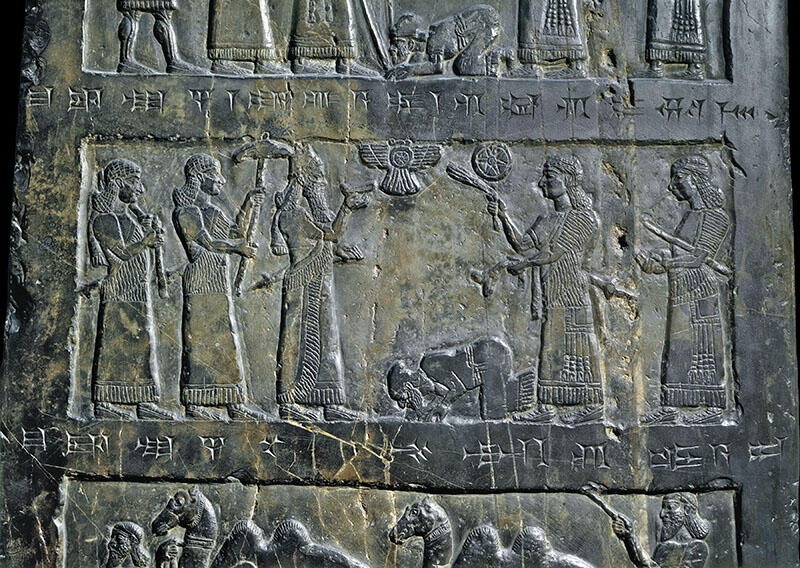Jehu on Obelisk of Shalmaneser III
859 BCE–824 BCE
Image

Engage with this Source
Related Guide
Ancient Israel in Foreign Writings
Biblical Period
Inscriptions and documents from ancient Israel’s neighbors, especially Assyria and Babylonia, provide important historical context.
You may also like
Tiglath-pileser III, Summary Inscription
The land of Bit-Humria (the House of Omri) . . .
[ . . . his] auxiliary [troops . . . ] all of its people . . . to Assyria I carried off. Pekah, their king, [I/they ki]lled . . . and I appointed…
Sargon II, Calah Summary Inscription
The Samarians, who had come to an agreement with a [hostile (?)] king not to do service or to render tribute to me, did battle. In the strength of the great gods, my lords, I fought with them; I…
Sargon II, Khorsabad Summary Inscription
I besieged and captured Samaria. I took as spoil 27,290 people who live there; I organized (a contingent of) fifty of their chariots and I instructed the rest of them in correct conduct. I appointed…

Assyrian Soldier Slaying a Captive
Soldier slaying captive, Khorsabad, late eighth century BCE. The captive is probably a Samarian seized during Sargon’s conquest of the city. From a relief in the palace of Sargon at Dur-Sharrukin…
Sennacherib’s Annals: The Campaign against Judah
As for Hezekiah, the Judean, I besieged 46 of his fortified walled cities and surrounding smaller towns, which were without number. Using packed-down ramps and applying battering rams, infantry…

Conquest of Lachish Depicted on Relief of Sennacherib
This relief, from Sennacherib’s palace in Nineveh, shows Sennacherib’s army attacking Lachish (an event alluded to in 2 Kings 18:14 and 17). Sennacherib is sitting on his throne outside the city…


